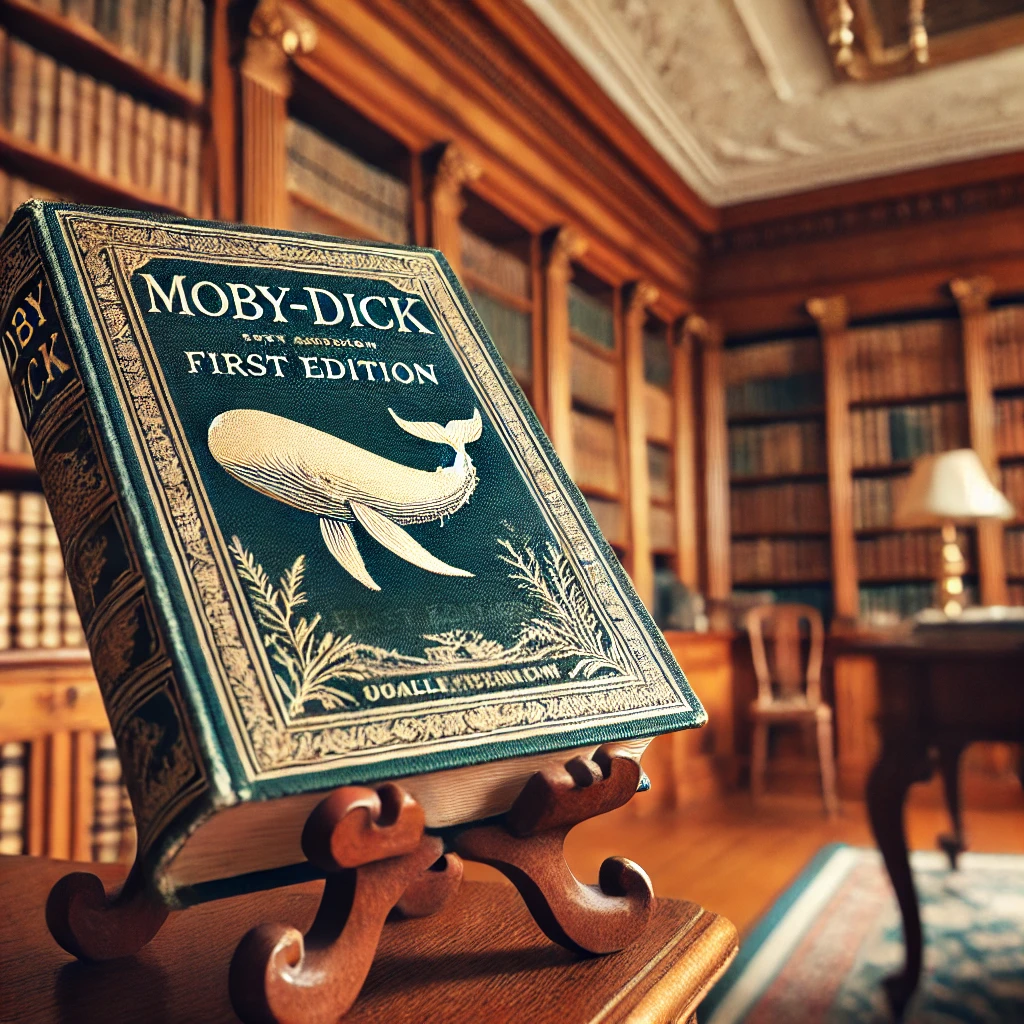On November 14, 1851, Herman Melville’s literary masterpiece, Moby-Dick, was published in the United States, marking a pivotal moment in American literature. This iconic novel, with its intricate narrative and profound themes, explores the depths of obsession, vengeance, and the complexity of the human experience. While Moby-Dick did not achieve immediate commercial success, it has since been recognized as one of the greatest works of American fiction, influencing countless readers and writers alike.

The Story Behind the Novel
Moby-Dick follows the journey of Ishmael, a sailor who joins the whaling ship Pequod, captained by the enigmatic and monomaniacal Captain Ahab. Ahab is driven by a singular obsession: to hunt down and kill Moby Dick, the legendary white whale that had previously destroyed his ship and bitten off his leg. The novel delves into Ahab’s relentless pursuit of the whale, illustrating the themes of vengeance and the human struggle against nature.
Melville’s narrative is rich with symbolism and philosophical musings, intertwining elements of adventure and profound existential inquiry. The novel is not just a tale of a man’s quest for revenge but also an exploration of the human condition and our place in the universe. The complexity of its characters, particularly Ahab and Ishmael, provides insight into the duality of human nature, reflecting both our aspirations and our darker impulses.

Critical Reception and Legacy
Upon its publication, Moby-Dick received a mixed response from critics and readers alike. Many found the novel’s structure unconventional, and its dense prose and philosophical digressions were challenging for contemporary audiences. However, as time passed, literary critics began to reevaluate Melville’s work, recognizing its innovative narrative techniques and profound thematic depth. By the 20th century, Moby-Dick had cemented its status as a cornerstone of American literature.
Today, Moby-Dick is celebrated not only for its storytelling but also for its rich symbolism and exploration of complex themes. It has inspired numerous adaptations, scholarly analyses, and artistic interpretations, continuing to resonate with readers across generations. The novel’s exploration of obsession, the struggle against fate, and the moral ambiguities of humanity makes it a timeless classic that invites reflection and debate.
Cultural Significance
The cultural significance of Moby-Dick extends beyond the realm of literature; it has become a part of the American cultural identity. The themes presented in the novel, such as the confrontation with nature and the pursuit of knowledge, resonate with the American spirit of exploration and individuality. The novel has been referenced in various forms of media, including film, theater, and music, underscoring its enduring impact on popular culture.

Moreover, Melville’s work has sparked discussions about the environment and human responsibility, making it relevant in contemporary dialogues about nature and society. The character of Captain Ahab embodies the archetype of the tragic hero, whose quest for revenge ultimately leads to his downfall, serving as a cautionary tale about the dangers of obsession and the limits of human ambition.
The publication of Moby-Dick on November 14, 1851, represents a landmark moment in American literature, giving rise to a narrative that explores the intricacies of the human experience through the lens of obsession and vengeance. Herman Melville’s masterful storytelling and profound thematic explorations have established Moby-Dick as a timeless classic, continuing to inspire and challenge readers to this day. As we reflect on its significance, we celebrate the novel’s role in shaping literary discourse and its lasting impact on our understanding of humanity’s place in the natural world.
